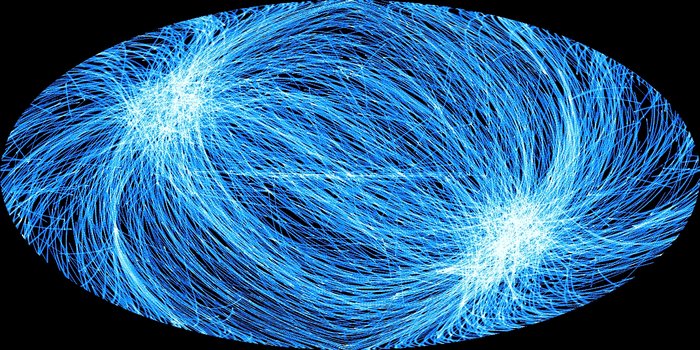
This blue ‘ball of string’ actually records 2114 movements made by ESA’s XMM-Newton space telescope as it shifted its gaze from one X-ray object to another between August 2001 and December 2014.
Orbiting in space since 1999, XMM-Newton is studying high-energy phenomena in the Universe, such as black holes, neutron stars, pulsars and stellar winds.
Even when moving its focus between objects, the space telescope collects scientific data, revealing X-ray sources across the entire sky. After correcting for overlaps between slews, 84% of the sky has now been covered.
The plot is in galactic coordinates such that the centre of the plot corresponds to the centre of the Milky Way. The slew paths pass predominantly through the ecliptic poles, indicated by the density of overlapping slew paths to the top left and bottom right.
The image was created as part of the XMM-Newton Slew Survey Catalogue release in March 2017, and which was featured as our Space Science Image of the Week last month.
This week, many scientists studying the X-ray universe are meeting to discuss the latest in high-energy astrophysics, including discoveries from current X-ray missions, as well as expectations of future missions.
Over 5000 papers have been published on XMM-Newton results to date. Scientists are also looking forward to the next generation of X-ray satellite, such as ESA’s Athena, the Advanced Telescope for High-ENergy Astrophysics, which is expected to be launched towards the end of the next decade.








